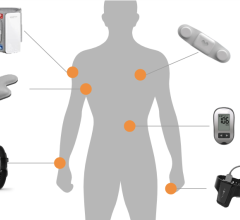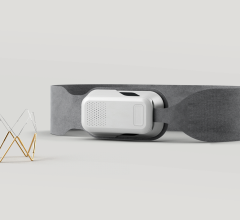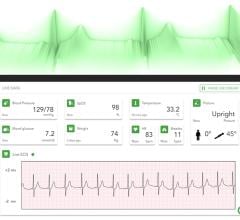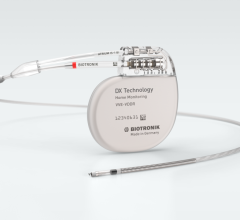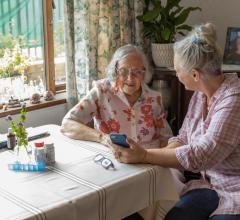
Using telemedicine, cardiologists can keep track of patients, even if they are thousands of miles away.
The buzz words “access to healthcare” have recently been at the center of many political campaigns and government appropriations. However, to fully understand the importance of “access to healthcare” you need to look at how it impacts ordinary Americans. For example, the buzz words take on a different meaning for a small tribal community in the northern part of Alaska or residents in downtown Oakland.
In the following real-world cases, access to healthcare has geographical and economic/time boundaries; important factors that are critical to a patients quality of care. With recent technological advances, healthcare is becoming available to many who otherwise would not have been provided such an opportunity. The patients described below are in a need of good healthcare and would benefit from telemedicine.
When Time is of the Essence
The population of Point Hope, Alaska is 850 people. There is not one single doctor, especially cardiologists, among this population. The nearest hospital and cardiologist is 120 miles away in Kotzebue, and this trip can be very hard to make, especially in December. During the winter months a patient enters the Alaska Native Tribal Health Consortium (ANTHC) Point Hope community health center complaining of chest pains. This patient’s needs raise several challenges for examination, diagnosis and treatment, the biggest of which is cost. The cost of transporting the patient to the doctor, or the doctor to the patient, would seem to impede the access to healthcare. Information technology (IT), although challenging, can reduce the cost and get the patient the care they need.
Near Oakland, another patient has a family history of congestive heart failure. She has repeatedly delayed and rescheduled her physical and cardiovascular exam, putting her childrens’ needs first. She has insurance, but she can’t afford to take the time away from her hourly-wage job. Without reliable transportation of her own, the five-mile trek requires two bus rides and can take up to 45 minutes each way to/from Walnut Creek. If she misses work, she doesn’t get paid. She is doing everything she can to just meet the basic needs of rent, food and clothes. A telemedicine house call could address the challenges and provide peace of mind to the patient.
Providing Options
Technology in the form of telemedicine or telehealth can provide access to healthcare for both of these patients by linking the results directly to the physicians. Although there are many diverse models, the remainder of this article describes the solutions to these two specific examples.
The Alaska Federal Health Care Access Network (AFHCAN) has created and deployed 400 mobile telemedicine carts for the purpose of diagnosing and baselining patients. The carts are equipped with an ECG, vital signs, digital cameras, tympanometer, spirometer, otoscope, as well as a computer with a satellite link to the AFHCAN server farm. A trained technician performs the various tests on the patients. This information is transmitted to the AFHCAN applications and subsequently to the EMR/EHRs. An e-mail notification is sent to the physician on call to provide an over-read and diagnosis. Thus, the patient’s needs are addressed over a large geographical area.
AFHCAN extends its services to 250 tribal health sites; 44 organizations including the U.S. Department of Defense (Army, Coast Guard, Navy); and 10 states; including Alaska and Ohio. The carts are also used in the U.S. penal systems, as well as the countries of Haiti and Greenland. AFHCAN provides approximately 12,000 cases on 10,000 patients annually. According to Stewart Ferguson, director of TeleHealth for AFHCAN, the organization “provides care to more than 10,000 patients annually and saves about $3.5 million by mitigating airfare.”
The key to telemedicine as a solution for access to healthcare is the integration of all the variant technologies into a virtual, seamless transmission from the respective care site to the physician(s) on call. “This task encompasses the integration of data from several manufacturers and devices and processing by more than 50 AFHCAN servers,“ said Chris Patricoski, clinical telehealth director for AFHCAN. “Using the Internet and satellite links makes sending diagnostic results even more complex. Consider the complexities of sending data packets from a Coast Guard ship with intermittent access. Some manufacturers have addressed this challenge such as Midmark IQdevices with IQpath software.”
AFHCAN has provided "house calls" to geographically challenged applications.
Another issue facing healthcare is the shortage of physician specialists in underserved areas. Doctors TeleHealth Network (DTN) is a national provider of telemedicine services that supports the entire spectrum of patient wellness and provider activities targeting these communities. DTN connects the patients via the specialists to the physicians, and can be deployed to rural and urban areas.
“The scope of technological advances being made today in the areas of diagnosis and treatment of medical ailments is truly amazing,” said Kurt Grossman, CEO of DTN. “DTN utilizes a set of digital medical devices (Midmark IQecg, IQholter, IQspiro, and Welch Allyn Spot Vitals) to connect to the EMR for storage of patients’ records ready for review by a physician. The attending physician is able to view the test results, in real-time on a laptop or computer without being in the presence of the patient.”
DTN works closely with the regional sites to ensure the correct diagnostic products are on-site, the technicians receive the proper training, and the physicians are on-call. The DTN technology can be deployed to the rural and urban areas. Currently, this technology is available in California, Pennsylvania and Washington. It will soon be expanded to 18 other states and 20 countries. “This is a cost effective method to make the physicians’ skills widely available across the globe," added Grossman.
During the early beginnings of telemedicine, local physicians often sent a fax or paper copy of the results to a physician or specialist in another location. The readability of fax copies deterred the effectiveness of the physician and subsequently the diagnosis. The ability to send the raw data over the Internet or communication lines was a major improvement but also brought new challenges. During the transmission, files often become corrupted or transmission times out. Newer advances have mitigated these problems enabling operational efficiencies.
The on-site consulting specialists and the primary care physicians have collaborated via technology to provide a ‘house call’ to the underserved populations. This collaboration extends to specialist who advises a second opinion on difficult diagnosis. Unlike the current system technology exists to “track down” an available licensed specialist immediately. If a cardiologist has schedule availability he/she could help an internist between appointments. Unlike with a telephone call, they can look the patient in the eyes; look the internist in the eyes; and see the ECG live. That is a quick meaningful exchange of voice, video, and data that improves clinical quality and brings added revenue to providers.
The New House Call
Technological advances are bringing us back to the days when house calls were the norm. Imagine a device the size of a picture frame located in the kitchen or living room of patients with chronic diseases. The picture frame could alert the patients when it’s time to take their medicine, it could inquire about their current health, and it could record vital readings such as glucose levels or blood pressure. Via the internet, these results would then be sent to the attending physician and automatically entered into electronic medical records.
For a more personal touch, the patient could request an e-visit with the doctor or physicians’ assistant. They would simply press a button on the picture frame to set up a video conference call. This is how technology is making "house calls" possible without travel by either the patient or the clinician.
The key to telemedicine is using medical devices transmitting data across commercially available lines to connect the patient to healthcare professionals. As more medical devices become accessible to the patients and the patients’ home, chronic diseases can be managed more effectively, symptomatic conditions identified faster and treatments administered quicker. Ultimately, patients with chronic diseases, which absorb about 75 percent of the healthcare dollars, can be managed effectively.

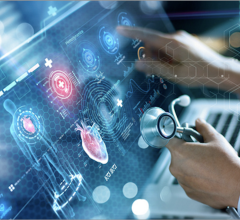
 July 10, 2024
July 10, 2024 

